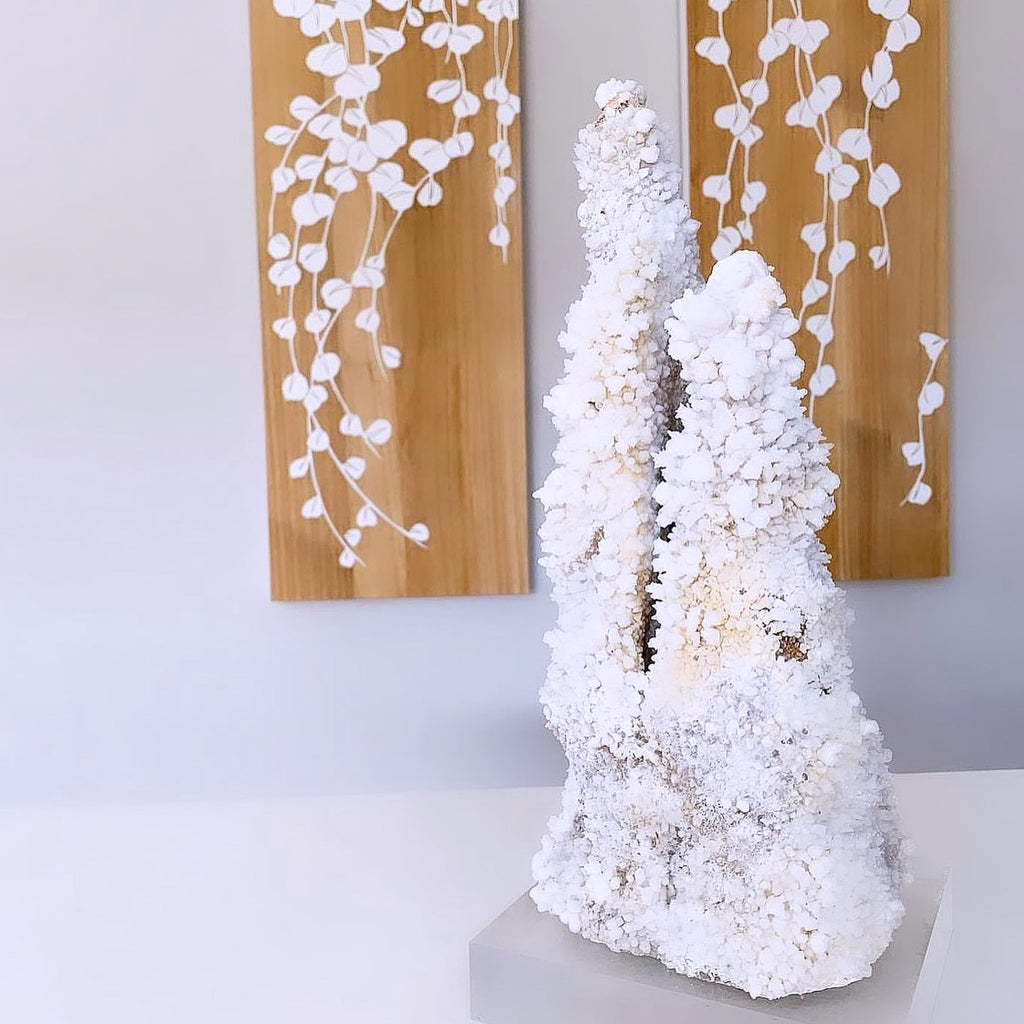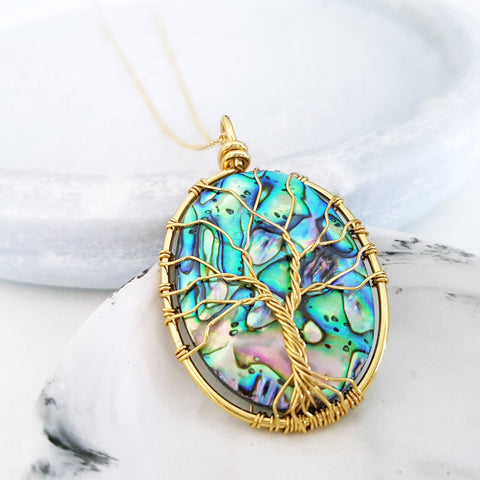


Crystal Specimens - Calcite Stalactite (Isabelle)
Gemstones are beautiful gifts from Mother Nature. With an amazing palette of colours, different gemstones have their own meanings and healing properties. They are perfect meaningful gifts for your loved ones.
Measurements:
Approximately 46 x 16 x 16 cm.
Gemstone Properties:
Speleothems, sometimes referred to as formations or decorations, are cave features formed by the deposition of minerals. The word speleothem is derived from the Greek words spelaion meaning "cave" and thema meaning "deposit". The speleothems with which most people are familiar are stalactites and stalagmites. Stalactites grow down from the cave ceiling, while stalagmites grow up from the cave floor. It’s easy to remember which is which: Stalactites have a "T" for top and stalagmites have a "G" for ground.
Speleothems actually form because of water. Rainwater seeps through cracks in the rock. As it passes through organic material, it picks up carbon dioxide gas, creating carbonic acid. This weak acid passes through joints and cracks in limestone. The mineral calcite is dissolved from the limestone rock in which a cave is formed. When this water that now holds the dissolved rock is exposed to the air in the cave, it releases the carbon dioxide gas, much like when a bottle of soda is opened. As the carbon dioxide is released, calcite is precipitated (redeposited) on cave walls, ceilings and floors. As the redeposited minerals build up after countless water drops, a stalactite is formed. If the water that drops to the floor of the cave still has some dissolved calcite in it, it can deposit more dissolved calcite there, forming a stalagmite.
Speleothems form at varying rates as calcite crystals build up. Several factors can determine the rate of growth. Two important factors are the temperature outside (which affects the rate of decay of plants and animals, hence the amount of carbon dioxide in the soil), and the amount of rainfall. The shapes of speleothems are determined by how the acidic water enters the cave (by dripping, seeping, or splashing) and how the water stands or flows after entering the cave.
Speleothems actually form because of water. Rainwater seeps through cracks in the rock. As it passes through organic material, it picks up carbon dioxide gas, creating carbonic acid. This weak acid passes through joints and cracks in limestone. The mineral calcite is dissolved from the limestone rock in which a cave is formed. When this water that now holds the dissolved rock is exposed to the air in the cave, it releases the carbon dioxide gas, much like when a bottle of soda is opened. As the carbon dioxide is released, calcite is precipitated (redeposited) on cave walls, ceilings and floors. As the redeposited minerals build up after countless water drops, a stalactite is formed. If the water that drops to the floor of the cave still has some dissolved calcite in it, it can deposit more dissolved calcite there, forming a stalagmite.
Speleothems form at varying rates as calcite crystals build up. Several factors can determine the rate of growth. Two important factors are the temperature outside (which affects the rate of decay of plants and animals, hence the amount of carbon dioxide in the soil), and the amount of rainfall. The shapes of speleothems are determined by how the acidic water enters the cave (by dripping, seeping, or splashing) and how the water stands or flows after entering the cave.
This stunning piece of Nature artwork comes with a stylish and elegant clear acrylic stand.
P.S. Please note that all natural stones may vary in shapes, sizes and colours. The actual product may differ slightly from the product image.




